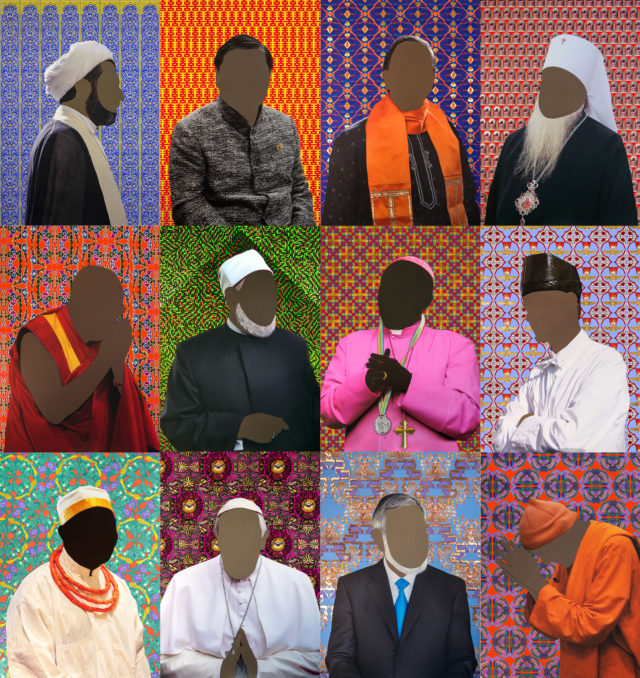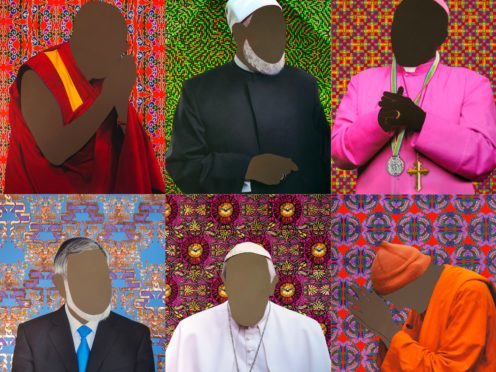An artist who has created faceless portraits of 50 of the world’s leading religious leaders has said she chose to paint out their features partly to address the celebrity status their office affords them.
Nicola Green has depicted the likes of Pope Francis, the Dalai Lama and Archbishop of Canterbury Justin Welby for an exhibition called Encounters.
The collection is being displayed at the St Martin-in-the-Fields church in London’s Trafalgar Square.
It will tour a series of international venues from December to March 2019.
Art historians have confirmed that it marks the first time that paintings of the heads of all the world’s major religions have been shown together with equal status.

When asked by the Press Association if she thought that the leaders were celebrities or idols in their own right, Green said: “Yes, definitely, I think many of them do reach that status.
“Not everybody of course but there are people who view the Pope, for instance, in that way.
“There are swamis that have extraordinary followings where they have 100% a celebrity status.
“In Islam depicting the face is a controversial issue. I think that by painting out the faces I am also addressing that.
“There is a history of aniconism in most religions that addresses that, which is another reason I made my work in that way.”
Green added: “I wanted people to think about the relationship that these leaders have with their office.
“If you have facial features it becomes very much the individual and not about their office.
“This work is really about difference and how we identify ourselves in relation to other people.
“So as a viewer when you look at it, it is easier when there are no facial features to think about yourself in relation to these leaders.”
Green has been working on the project for 10 years and sat in on meetings the faith leaders held with one another to inform her artistic portrayal of them.
One of these meetings included a 2011 gathering of over 200 religious figures coordinated by Pope Benedict XVI in the Italian town of Assisi.
The exhibition has been praised by The Dalai Lama, who said: “I would like to commend Nicola Green on her initiatives to promote religious harmony.
“Like her, I, too, believe that today’s leaders of various religious traditions are becoming more aware of the need for peaceful co-existence.
“I am confident that with more religious leaders actively involved in promoting religious harmony, we can all help in making this world a better place for everyone.”
Green said she hoped that those who visit the exhibition will take away its message of hope.
“These religious leader are aware that people are often creating wars and disputes in the name of religion.
“They are making a very serious attempt to understand each other and stand on a platform together and begin to broker peace where presidents and governments aren’t able to.
“As an artist I hope people look at this work and think about how they regard and behave towards people who have completely different views to them.”
